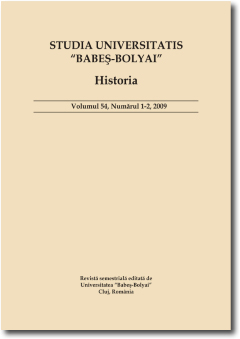THE GREEK-CATHOLIC CHURCH FROM TRANSYLVANIA AND THE TRADITIONAL POPULAR RELIGIOSITY
THE GREEK-CATHOLIC CHURCH FROM TRANSYLVANIA AND THE TRADITIONAL POPULAR RELIGIOSITY
Author(s): Ovidiu GhittaSubject(s): History
Published by: Studia Universitatis Babes-Bolyai
Keywords: Greek-Catholic Church of Transylvania; popular religiosity; ecclesiastical tradition; Catholic reformism; supersition; Josephinism.
Summary/Abstract: The present study aims to assess the attitude of the Greek-Catholic hierarchy of Transylvania in the eighteenth century towards traditional popular religiosity. The essay starts from the assumption that, at the time of the union with the Roman Church, the Romanian bishops and the archpriests expressed conservative views concerning the rite and canon law, both considered essential for the internal stability and the cohesion of their Church and, implicitly for its identity. The image they wished to transmit was that of a homogenous religious community (through its „law” and tradition), which was meant to remain the same, unchanged. However, until 1729, mainly because of Jesuit influence, texts with normative value reveal a tendency to intervene in the realms of religious practice, emphasising the need for rigour and discipline in the liturgical and sacramental activity of the parishes and communities. This tendency was efaced during the episcopate of Inochentie Micu (1730-1744), when the attachment of the Romanian clerical elite to the Eastern ecclesiastical tradition and to time-honoured customs was programmatically reaffirmed. In this ideological atmosphere there was no place for discussing the eventual correction of some of the traditional forms of popular religiosity. This position was maintained despite the fact that, from outside the Church it was recurrently implied (especially by those irritated by the political requirements of the Uniate Bishop) that the Romanians lived in astounding ignorance, practicing innumerable superstitions and witchcraft. The Orthodox movements occurring between 1744 and 1761, which contested the Greek-Catholic formula forced the Uniate hierarchy to react. They initiated, at that moment an ample transforming process, meant to reveal the identity of their Church as a confessional one. Conceived within this particular denomination, by an elite formed in Rome, Vienna and Trnava the discourse which directed the entire process contained the central idea that the union brought no real change to church tradition or to the law. It needs to be remarked however that some members of this generation, familiar with the new reforming trends, hostile to Baroque piety – trends which relaunched the Tridentine reforming spirit – came to position themselves critically towards some of the hyposthases of popular religiosity, towards the devotions and rituals considered to be mere additions, lacking both Biblical and patristic fundament. In Păstoriceasca datorie (published in Blaj in 1759), the Bishop Petru Pavel Aaron openly challenged such practices for the first time in the official discourse of the Greek-Catholic hierarchy from Transylvania. The majority of the customs incrimminated were linked to the cycle of the main Christian feasts, which the Bishop, in agreement with an important Tridentine imperative, wished to transform into moments dedicated exclusively to prayer and pious behaviour.
Journal: Studia Universitatis Babes-Bolyai - Historia
- Issue Year: 58/2013
- Issue No: Special
- Page Range: 230-244
- Page Count: 15
- Language: English

